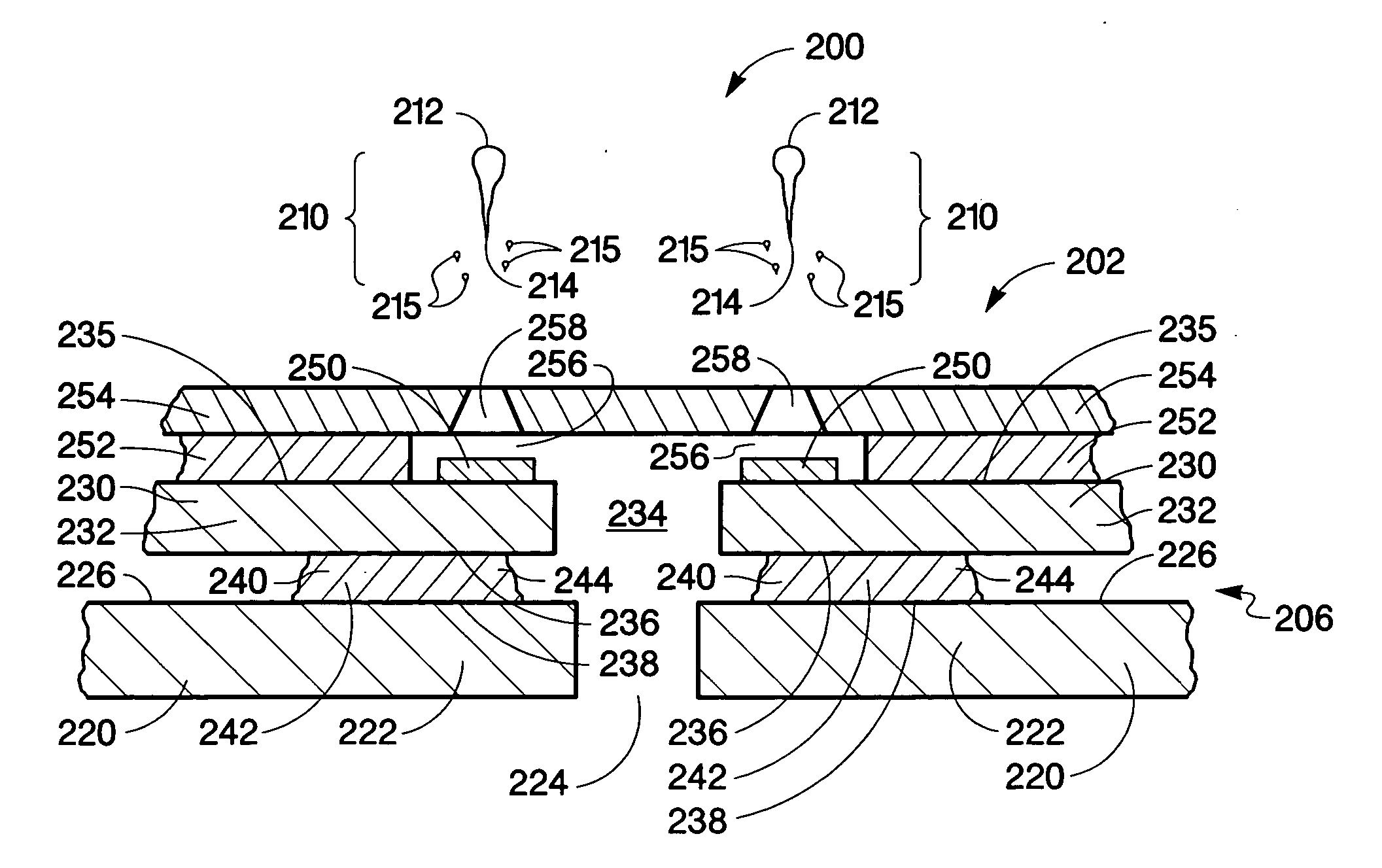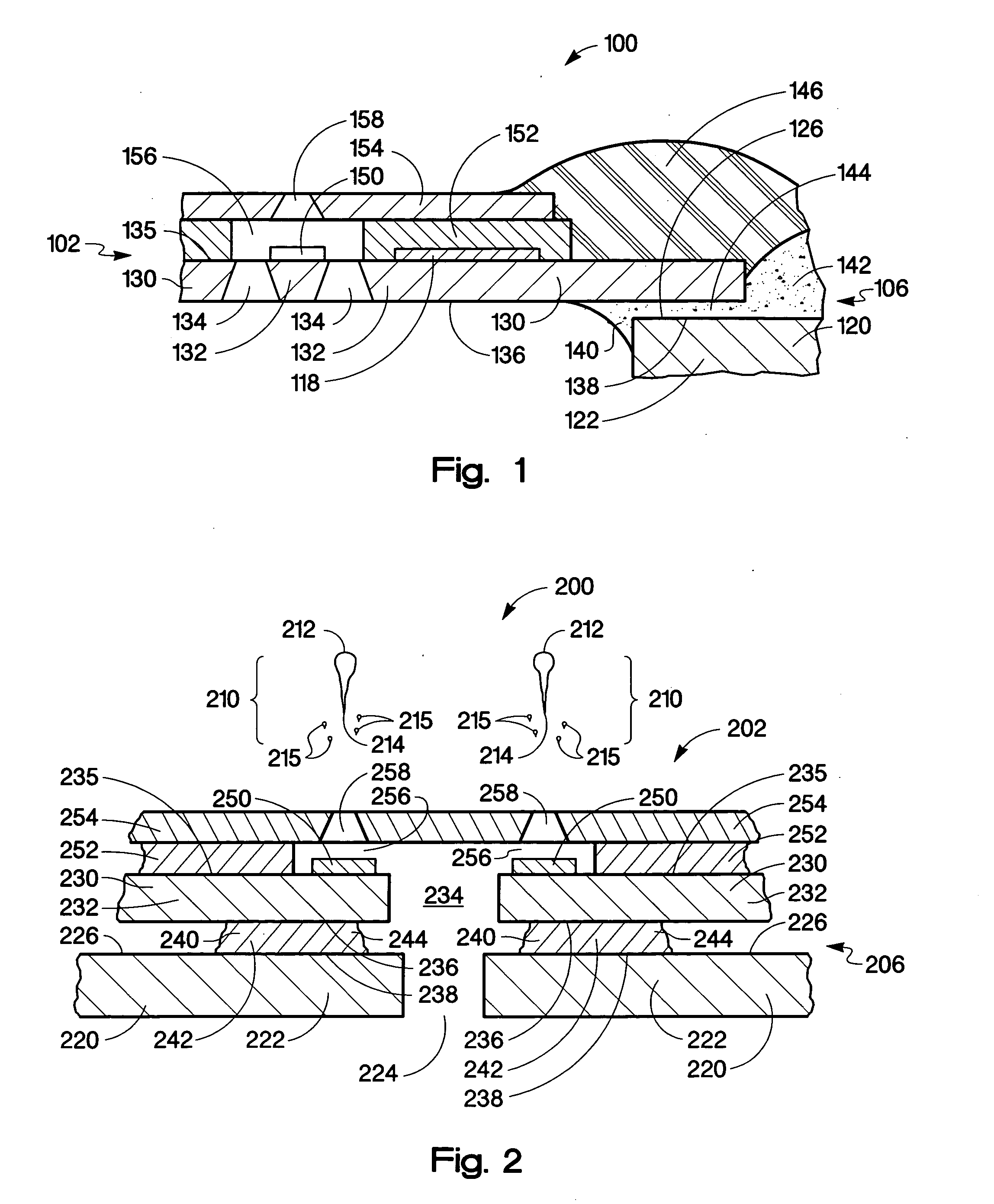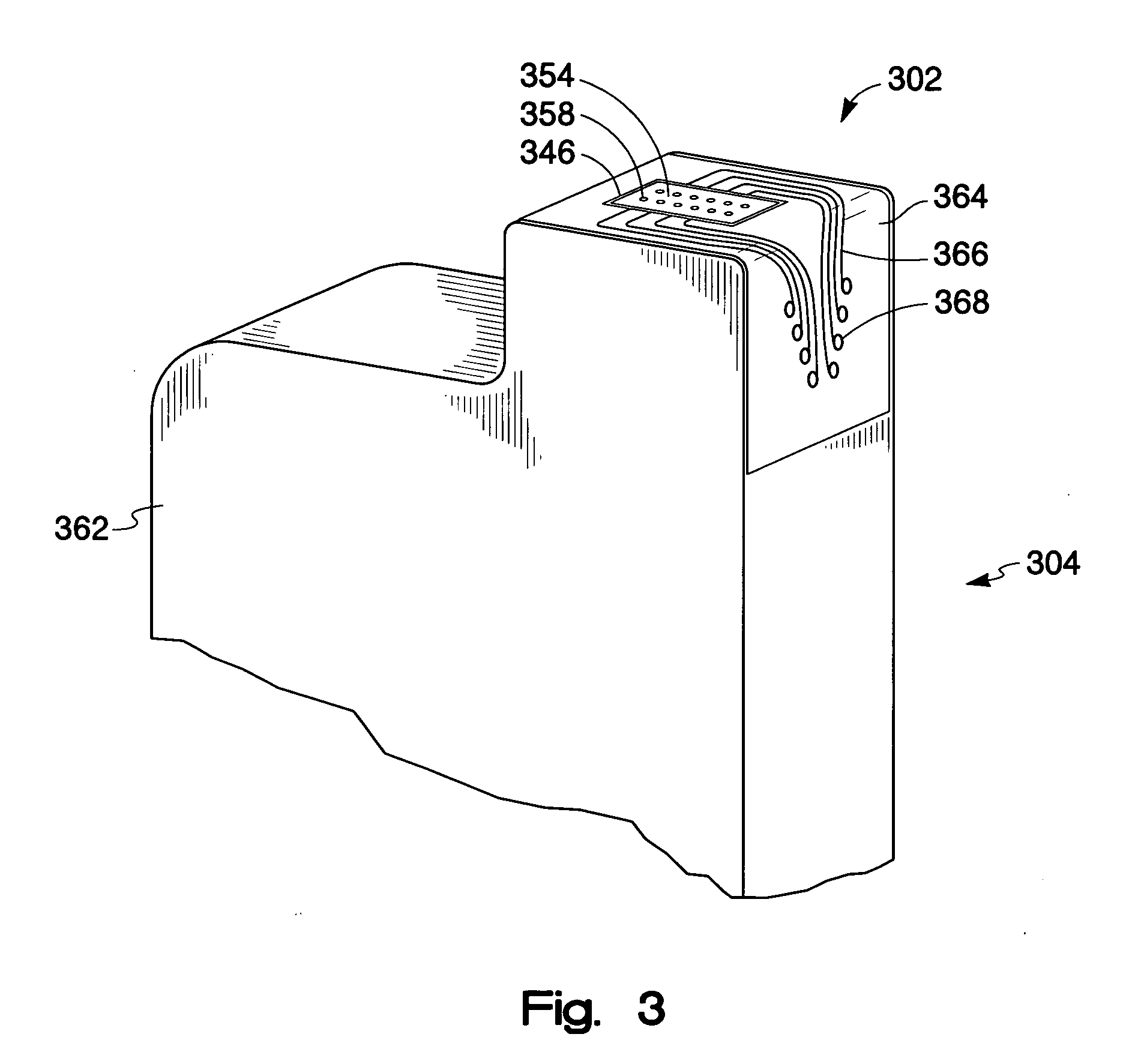Fluid ejection device utilizing a one-part epoxy adhesive
a technology of epoxy adhesive and ejection device, which is applied in the field of micromanipulation of fluids, can solve the problems of increasing the weight and cost, increasing the susceptibility of the microfluidic device to degradation by the components of those fluids, and additional limitations or restrictions on both the process and the use of materials
- Summary
- Abstract
- Description
- Claims
- Application Information
AI Technical Summary
Benefits of technology
Problems solved by technology
Method used
Image
Examples
Embodiment Construction
[0013] An embodiment of the present invention is shown, in a cross-sectional view, in FIG. 1. In this embodiment, fluid ejection cartridge 100 includes fluid ejector head 102 mounted to fluid ejection cartridge body 122 via substrate 132 utilizing one-part epoxy adhesive 140. One-part epoxy adhesive 140, in this embodiment, is a thermally cured epoxy. Adhesive bead 142 provides a method of attachment between first adherend 120, the cartridge body, and second adherend 130, the substrate. One-part epoxy adhesive 140 forms bonded structure 106 having adhesive thickness 144 between opposing surface 136 of second adherend 130 and substrate receiving-surface 138 of first adherend 120. Cartridge body 122 includes substrate carrier portion 126, which includes substrate receiving-surface 138. In addition, adhesive bead 142 also provides a fluid seal between substrate 132 and cartridge body 122.
[0014] Adhesive thickness 144 is in the range from about 200 micrometers to about 800 micrometers,...
PUM
 Login to View More
Login to View More Abstract
Description
Claims
Application Information
 Login to View More
Login to View More - R&D
- Intellectual Property
- Life Sciences
- Materials
- Tech Scout
- Unparalleled Data Quality
- Higher Quality Content
- 60% Fewer Hallucinations
Browse by: Latest US Patents, China's latest patents, Technical Efficacy Thesaurus, Application Domain, Technology Topic, Popular Technical Reports.
© 2025 PatSnap. All rights reserved.Legal|Privacy policy|Modern Slavery Act Transparency Statement|Sitemap|About US| Contact US: help@patsnap.com



